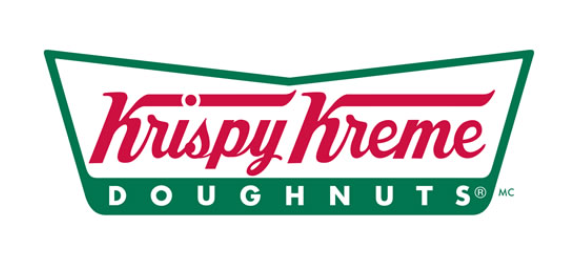Discover the advantages of automated retail and how it is revolutionizing the shopping experience.
Exploring the Benefits of Automated Retail
Automated retail is revolutionizing the way we shop and interact with stores. With advancements in technology, the retail industry is witnessing a significant shift towards automation. In this article, we will delve into the various benefits of automated retail and understand its impact on customer experience, operational efficiency, and more.
Understanding Automated Retail
Defining Automated Retail
Before we explore the benefits, it's important to define what automated retail is. Automated retail, also known as vending or smart retail, refers to the use of technology and self-service systems to automate the buying and selling process. It eliminates the need for human intervention in certain aspects of retail operations, providing a seamless and efficient experience for both customers and retailers.
Automated retail systems are designed to streamline the shopping experience by offering convenience and accessibility. These systems typically consist of vending machines or kiosks that are strategically placed in high-traffic areas such as shopping malls, airports, and office buildings. Customers can easily browse through a variety of products and make purchases with just a few taps on a touchscreen or the scanning of a barcode.
One of the key features of automated retail is its ability to operate 24/7. Unlike traditional retail stores with fixed operating hours, automated retail systems are always available, allowing customers to make purchases at any time of the day or night. This flexibility is particularly beneficial for busy individuals who may not have the time to visit a physical store during regular business hours.
The Evolution of Automated Retail
The concept of automated retail has come a long way since its inception. Initially, vending machines were only used to dispense snacks and beverages. However, with advancements in technology, automated retail has expanded its reach and now includes a wide range of products, from electronics to luxury items. The evolution of automated retail has paved the way for innovative shopping experiences.
Today, automated retail systems are equipped with state-of-the-art features and functionalities. They incorporate cutting-edge technologies such as artificial intelligence, machine learning, and computer vision to enhance the overall shopping experience. These technologies enable the machines to analyze customer preferences and offer personalized recommendations, making the shopping process more tailored and enjoyable.
Furthermore, automated retail has also embraced the concept of cashless transactions. Many automated retail systems now accept various payment methods, including credit cards, mobile wallets, and even cryptocurrencies. This not only provides convenience for customers but also reduces the risk of theft and vandalism associated with cash-based transactions.
Another significant development in automated retail is the integration of inventory management systems. Through real-time monitoring and data analytics, retailers can track product availability, monitor sales trends, and optimize inventory levels. This ensures that the machines are always stocked with popular items, reducing the chances of customers encountering out-of-stock products.
In addition to the technological advancements, automated retail has also contributed to sustainability efforts. By offering products in compact and efficient vending machines, retailers can minimize the need for large physical stores, reducing energy consumption and carbon emissions. Furthermore, the use of recyclable materials and eco-friendly packaging in automated retail systems promotes environmental consciousness.
Overall, the evolution of automated retail has revolutionized the way we shop. It has provided convenience, accessibility, and personalized experiences for customers while offering retailers cost-effective and efficient solutions. As technology continues to advance, we can expect automated retail to further expand its capabilities and reshape the future of retail.
The Role of Technology in Automated Retail
The retail industry is undergoing a significant transformation with the integration of advanced technologies. One of the key drivers of this transformation is the adoption of Artificial Intelligence (AI) and Machine Learning (ML) in retail automation. These cutting-edge technologies have revolutionized the way retailers operate, enabling them to analyze customer preferences, anticipate demand, and personalize recommendations.
AI and ML algorithms are designed to process vast amounts of data, allowing retailers to gain valuable insights into consumer behavior. By analyzing customer purchase history, browsing patterns, and social media interactions, automated retail systems can make accurate predictions about individual preferences. This enables retailers to offer personalized recommendations, ensuring that customers find the products they are most likely to purchase.
Moreover, AI and ML algorithms continuously learn and improve over time. As more data is collected and analyzed, these systems become more accurate in predicting customer preferences. This iterative learning process allows retailers to stay ahead of changing trends and offer the latest and most relevant products to their customers.
AI and Machine Learning in Retail Automation
Artificial Intelligence and Machine Learning are not only transforming the way retailers interact with customers but also revolutionizing the back-end operations of retail businesses. These technologies have the potential to streamline various aspects of retail automation, including inventory management, supply chain optimization, and pricing strategies.
One of the key applications of AI and ML in retail automation is inventory management. Traditional inventory management systems often struggle to accurately forecast demand, leading to stockouts or excess inventory. However, with the power of AI and ML, retailers can analyze historical sales data, market trends, and external factors to make accurate demand predictions. This enables retailers to optimize their inventory levels, ensuring that products are always available when customers need them.
Furthermore, AI and ML algorithms can help retailers optimize their supply chain operations. By analyzing data from various sources, such as supplier performance, transportation costs, and lead times, these algorithms can identify bottlenecks and inefficiencies in the supply chain. Retailers can then make data-driven decisions to improve the efficiency of their supply chain, reducing costs and improving overall operational performance.
IoT in Streamlining Retail Operations
In addition to AI and ML, the Internet of Things (IoT) is playing a crucial role in the automation of retail operations. IoT refers to the network of interconnected devices and sensors that collect and exchange data. In the context of retail, IoT enables real-time inventory monitoring, remote machine maintenance, and enhanced customer experiences.
Real-time inventory monitoring is a game-changer for retailers. Connected devices and sensors placed throughout the store can provide real-time updates on product availability. This allows retailers to proactively restock shelves, preventing stockouts and ensuring that customers can always find the products they need. Additionally, real-time inventory data can be integrated with AI and ML algorithms to further optimize demand forecasting and inventory management.
IoT also facilitates remote monitoring and maintenance of vending machines and other automated retail systems. By equipping these machines with IoT-enabled sensors, retailers can remotely monitor their performance, track inventory levels, and identify maintenance needs. This proactive approach reduces downtime and maximizes operational efficiency, ensuring that customers can always rely on these automated systems.
Furthermore, IoT enables retailers to create enhanced customer experiences. For example, smart shelves equipped with IoT sensors can detect when a product is picked up or put back, allowing retailers to gather valuable data on customer behavior. This data can be used to personalize offers, improve product placement, and optimize store layouts, ultimately enhancing the overall shopping experience.
In conclusion, technology, including AI, ML, and IoT, is playing a pivotal role in the automation of retail operations. These advanced technologies enable retailers to analyze customer preferences, anticipate demand, streamline inventory management, optimize supply chain operations, and create personalized shopping experiences. As technology continues to evolve, the possibilities for automated retail are endless, promising a future where retailers can deliver exceptional customer experiences and drive business growth.
Advantages of Automated Retail
Enhancing Customer Experience
One of the key benefits of automated retail is its ability to enhance the overall customer experience. With self-service systems, customers can browse products at their own convenience, without the need for assistance from store staff. Moreover, automated retail provides quick and easy transactions, reducing waiting time and improving customer satisfaction.
Increasing Operational Efficiency
Automated retail systems streamline various aspects of retail operations, resulting in increased efficiency. By automating inventory management, retailers can optimize stock levels, avoid overstocking or understocking, and reduce inventory carrying costs. Additionally, automated cashless payment systems minimize the need for cash handling, eliminating human error and speeding up transactions.
Reducing Retail Shrinkage
Retail shrinkage, which includes theft, fraud, and inventory errors, is a major concern for retailers. Automated retail systems with built-in security measures, such as surveillance cameras and tamper-proof locks, help mitigate the risk of shrinkage. Furthermore, real-time inventory tracking minimizes the chances of stock discrepancy and ensures accurate reporting.
Challenges in Implementing Automated Retail
Technological Hurdles
While automated retail offers numerous benefits, there are challenges associated with its implementation. Technological hurdles, such as system integration and compatibility issues, can pose obstacles for retailers. Ensuring seamless communication between different automated retail components requires careful planning and expertise.
Privacy and Security Concerns
As automated retail relies heavily on technology and data, privacy and security concerns need to be addressed. Protecting customer information, safeguarding transactional data, and addressing cybersecurity risks are vital in maintaining trust and confidence in automated retail systems. Implementing stringent security measures is essential to mitigate potential threats.
The Future of Automated Retail
Predicted Trends in Retail Automation
The future of automated retail looks promising, with several trends expected to shape the industry. Personalized recommendations, seamless omnichannel experiences, and cashierless stores are likely to become more prevalent. Robotic assistants and interactive displays will also play a significant role in delivering unique and engaging shopping experiences.
Impact on Retail Workforce
As automation continues to revolutionize the retail industry, there are concerns about the impact on the retail workforce. While automation may replace some traditional roles, it also creates new opportunities for skilled workers. Retail employees can focus on customer service, product curation, and other value-added tasks that enhance the shopping experience.
In conclusion, automated retail offers a wide array of benefits, from enhancing customer experience to increasing operational efficiency and reducing shrinkage. While there are challenges in its implementation, the future of automated retail holds immense potential. By embracing technology and leveraging its advantages, retailers can stay ahead in the rapidly evolving retail landscape.






